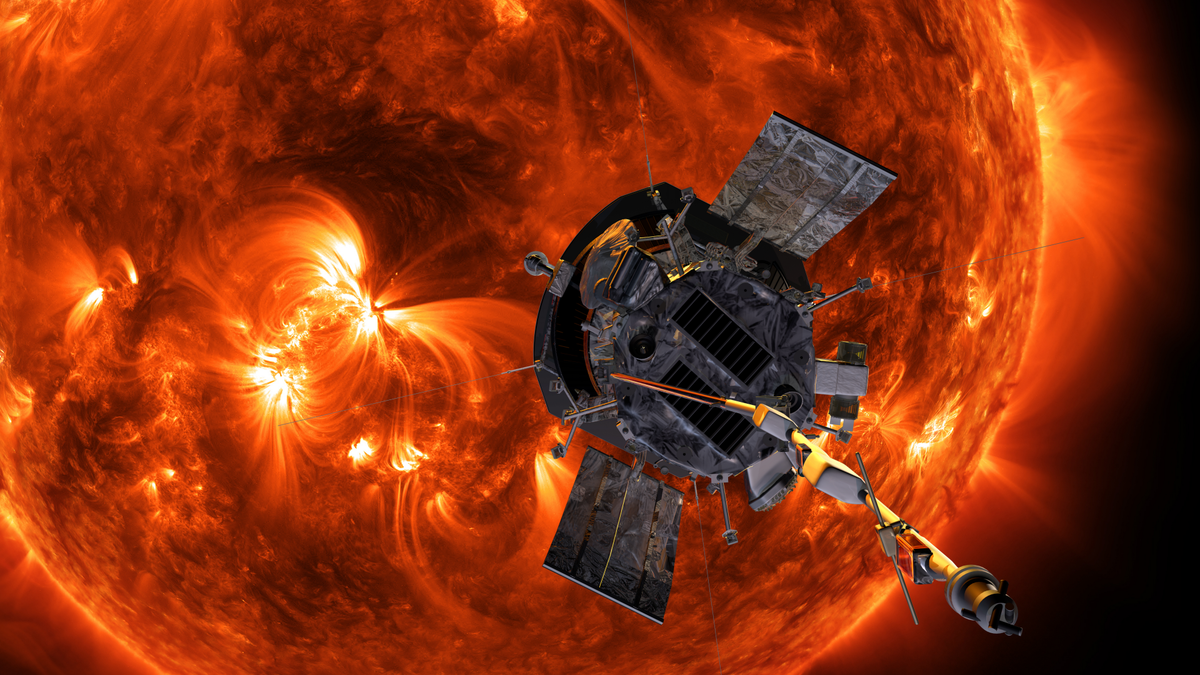NASA's Parker Solar Probe blasts off on its mission to the Sun
NASA's Parker Solar Probe blasts off from Cape Canaveral on its mission to the Sun.
In the early hours of Aug. 12, 2018, NASA’s Parker Solar Probe blasted off from Cape Canaveral Air Force Station atop a United Launch Alliance Delta IV on its audacious journey to the Sun.
The $1.5 billion mission has taken humanity closer to the Sun than ever before and the probe is helping scientists shed new light on the star.
In October 2018 the Parker Solar Probe clinched the record for closest approach to the Sun by a man-made object. The previous record of 26.55 million miles from the Sun's surface was set in April 1976 by the Helios 2 spacecraft.
NASA'S PARKER SOLAR PROBE BLASTS OFF ON EPIC JOURNEY TO 'TOUCH THE SUN'
The probe has subsequently come within 15 million miles of the Sun and its epic journey will eventually take it to within 3.8 million miles of the star’s surface. Parker has also completed three of 24 planned passes through the Sun’s corona, the outermost part of the star’s atmosphere.

Artist's impression of NASA's Parker Solar Probe. (Steve Gribben/NASA/Johns Hopkins APL)
In four papers published in the journal Nature, scientists explain how data from the probe is boosting our knowledge of the Sun.
“This first data from Parker reveals our star, the Sun, in new and surprising ways,” said Thomas Zurbuchen, associate administrator for science at NASA Headquarters in Washington, in a statement. “Observing the Sun up close rather than from a much greater distance is giving us an unprecedented view into important solar phenomena and how they affect us on Earth, and gives us new insights relevant to the understanding of active stars across galaxies."
NASA’S PARKER SOLAR PROBE BREAKS RECORD, BECOMES CLOSEST SPACECRAFT TO THE SUN
Scientists have observed bursts of energetic particles never seen before on such a small scale, as well as switchback-like reversals in the out-flowing solar magnetic field that seem to whip up the solar wind. The unexpected phenomenon has been compared to the cracking of a whip.
Researchers said they also finally have evidence of a dust-free zone encircling the sun. Farther out, there's so much dust from vaporizing comets and asteroids that one of 80 small viewfinders on one instrument was pierced by a grain earlier this year.
To withstand the heat of nearly 2,500 degrees Fahrenheit, the probe is protected by a special 4.5-inch-thick carbon-composite shield.
CLICK HERE TO GET THE FOX NEWS APP
Parker will sweep past Venus on Dec. 26 for the second gravity-assist of mission and make its fourth close solar encounter in January. On its closest approach in 2024, the probe will be traveling at approximately 430,000 mph, setting a new speed record for a man-made object.
The Associated Press contributed to this article.
Follow James Rogers on Twitter @jamesjrogers

